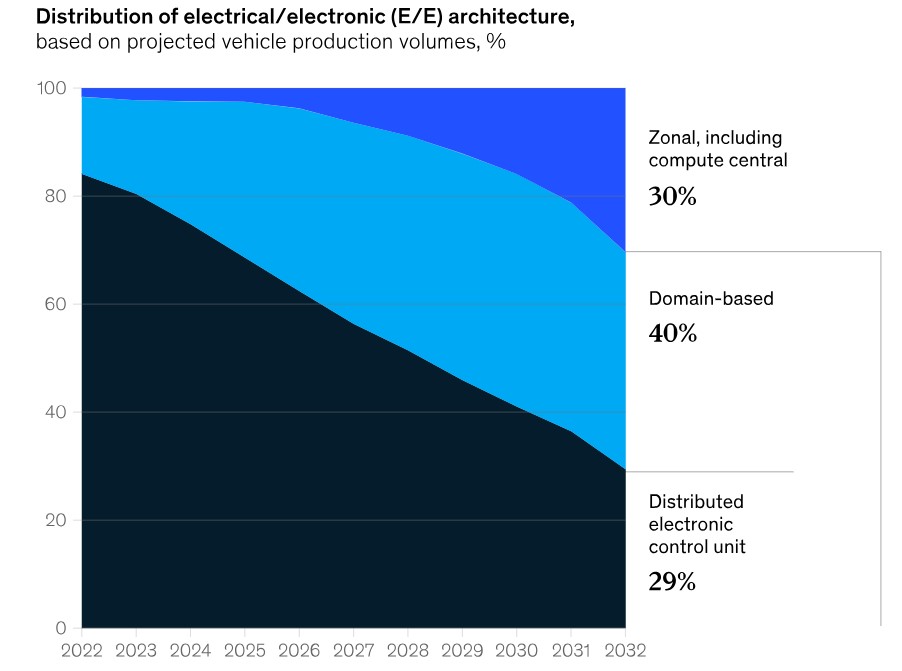With the rapid development of the automotive industry towards intelligence, electrification, and networking, the traditional distributed electronic/electrical (E/E) architecture can no longer meet the needs of modern vehicles for high-performance computing and data processing. Centralized E/E architecture has become a new trend in automotive design due to its efficiency, flexibility, and scalability.
Centralized E/E architecture enables more efficient and intelligent functionality by integrating multiple electronic systems into a unified core. This architecture not only simplifies the design and maintenance of the system, but also improves the overall performance and reliability of the system. In the automotive field, the centralized E/E architecture has promoted the rapid development of technologies such as autonomous driving and Internet of Vehicles. In the field of communications, it supports high-speed and low-latency communication of new generation communication technologies such as 5G and 6G. In the aerospace field, it realizes complex functions such as satellite communication and navigation.
In centralized E/E architectures, advanced semiconductor technologies play a crucial role. Not only do they provide powerful hardware support, but they also drive the development and transformation of the entire industry. Advanced semiconductor technology has the following features:
High performance: Advanced semiconductor technology can provide higher computing speed and lower power consumption, meeting the demand for high-performance hardware in centralized E/E architectures. This enables the system to process more complex and massive data, enabling a higher level of intelligence and automation.
Reliability: In complex and volatile environments, advanced semiconductor technology can maintain stable performance and ensure the normal operation of the system. This is critical for critical sectors such as automotive, aerospace, etc., as they face a variety of extreme conditions and challenges.
Integration: With the advancement of packaging technology, the integration of advanced semiconductor technology continues to increase. This allows more functionality to be implemented on a single chip, further simplifying the design and manufacturing process of the system.
Figure: 30% of vehicles are expected to have centralized E/E architectures by 2032 (Source: Mckinsey)
According to McKinsey & Company, by 2032, the centralized E/E architecture will drive the size of the automotive semiconductor market to $140 billion, of which high-performance computing units will drive the growth of automotive microcomponents and logic semiconductors to $60 billion. This prediction highlights the enormous potential of advanced semiconductors in the automotive industry.
Technologies to achieve centralized E/E architectures include hardware accelerators, multi-core processors, virtualization technologies, and containerization. These technologies not only improve computing efficiency, but also enable complex data processing and functional integration. For example, hardware accelerators can offload specific tasks of the CPU, while multi-core processors support parallel processing of tasks to increase computing power.
The centralized E/E architecture is a key direction for the future development of the automotive industry, and advanced semiconductors are at the heart of realizing this architecture. As the technology continues to mature and the market size expands, the centralized E/E architecture is expected to bring revolutionary changes to the automotive industry, bringing consumers a safer, smarter, and more environmentally friendly driving experience.






